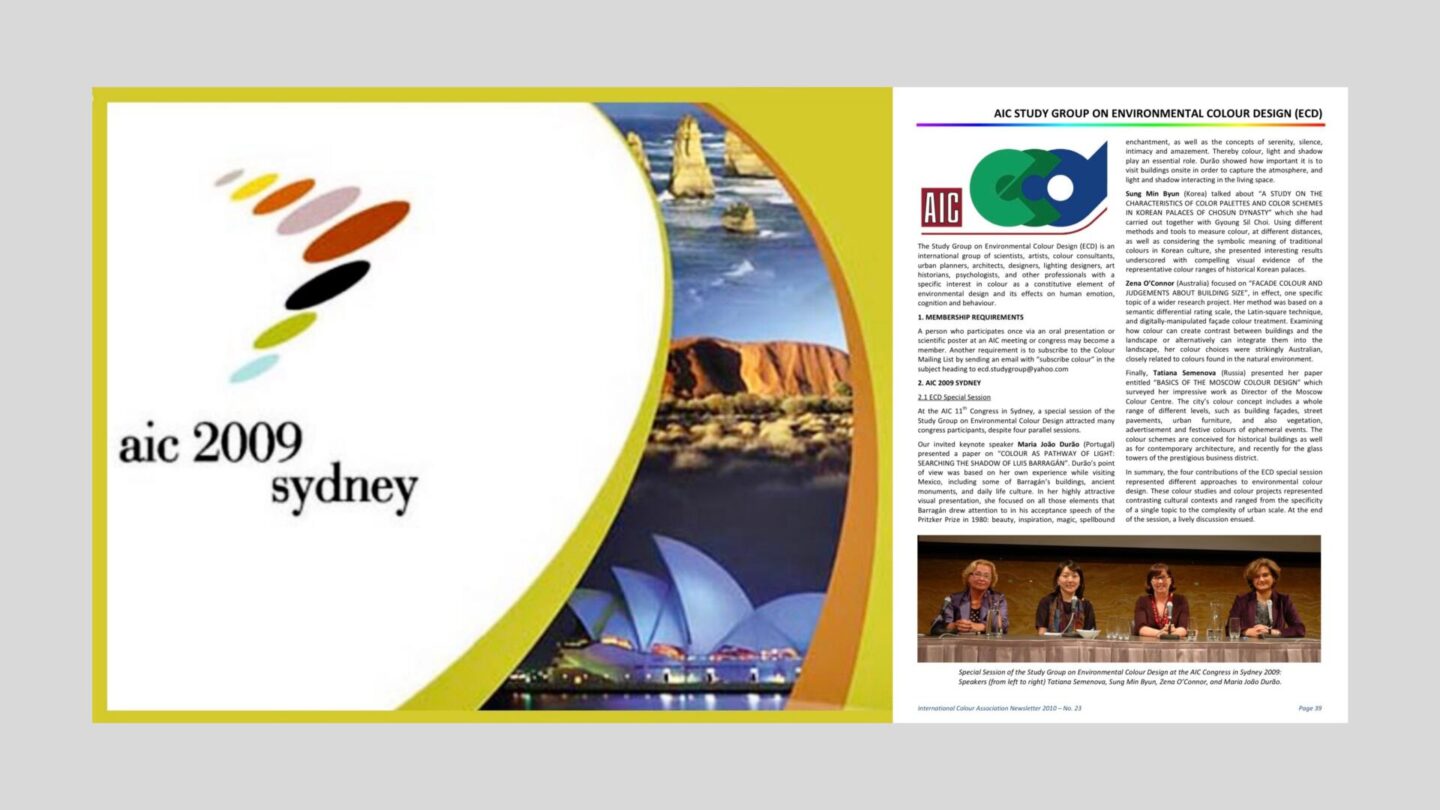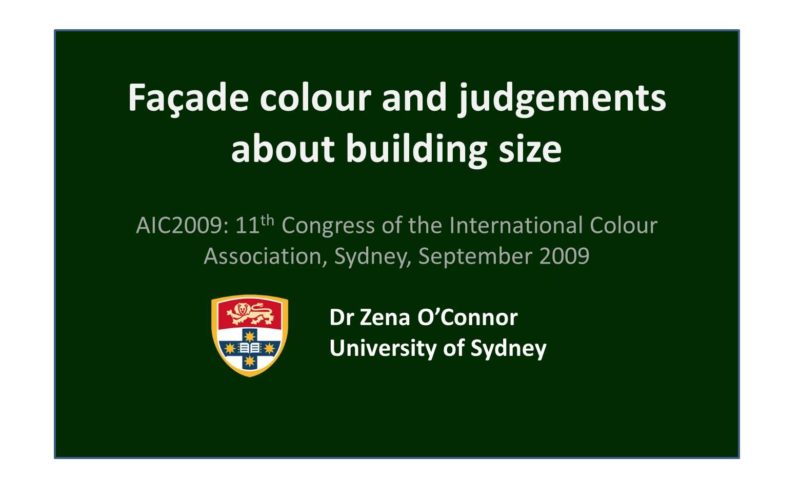
‘Façade colour and judgements about building size’ – As an individual member of the AIC (International Colour Association), I was happy to present this peer-reviewed paper, which referred to a small part of my PhD research, at AIC2009.
Façade colour is an attribute of the built environment that impacts urban design, contribute to visual amenity, heritage values as well as a sense of ‘place’. Furthermore, planning policy often includes reference to façade colour when discussing environmental aesthetics and the congruity of the built environment relative to natural surroundings. In Sydney, planning instruments frequently include guidelines specifically relating to façade colour. However, little is known about the relationship between façade colour and judgements about building size, and a lack of empirical evidence prompted a relatively comprehensive empirical investigation conducted as part of my PhD research. Drawing from this larger investigation into patterns of response to façade colour, this AIC2009 paper focused on one specific research aim: to what extent are changes in façade colour associated with variations in judgements about building size.
Conducted under the aegis of the Environment-Behaviour Studies (EBS) Research Group at the Faculty of Architecture, Design & Planning (University of Sydney), my PhD research involved empirical qualitative and quantitative investigative methodologies to address the research aims. Patterns of response in the dependent variables (overall aesthetic response plus judgements about building congruity and building size) were examined relative to changes in the independent variable: façade colour. A semantic differential rating scale was used in conjunction with the visual stimuli which were presented to participants using the Latin-square technique, and the visual stimuli featured digitally-manipulated façade colour treatments.
The findings indicate that judgements about building size vary in relation to changes in façade colour. Given the range in variation among a relatively small selection of façade colours, the potential exists to use façade colour to visually minimise the size and apparent dominance of a building relative to its surroundings. While this potential may be less relevant to small structures and domestic buildings, the potential gains greater relevance in respect to structures considered to be ‘eyesores’ such as large, industrial buildings.

The paper discussed the research aims, methodology, data analysis and results, and findings related to the way in which colour contributes to minimizing the visual bulk of a large scale building.
The paper is available from the International Colour Association website scroll down to AIC2009 Sydney. If you would like a copy of the paper, please email.
